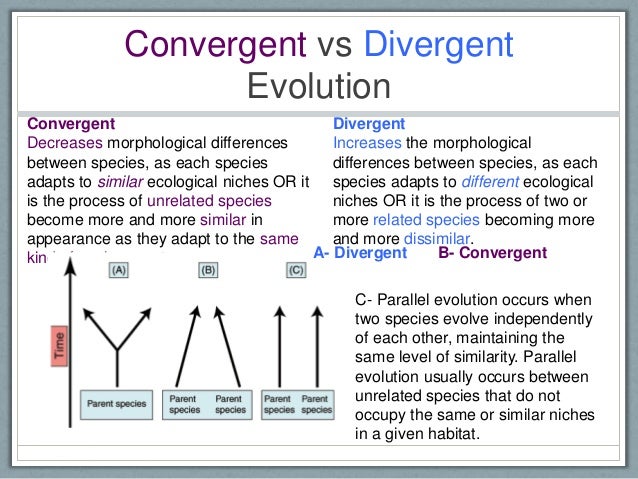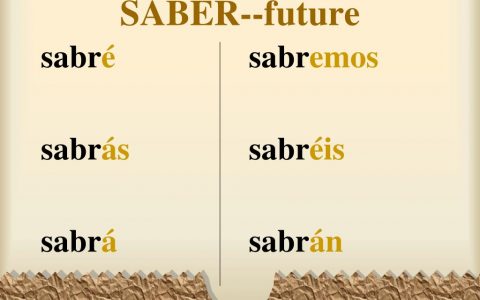Definition of Divergent and Convergent evolution
Divergent evolution
- Every creature on our amazing planet is coiled. Suppose you see any two species on the planet and find that they have a common ancestor. Hence, that ancestor may have lived millions or billions of years in the past. Moreover, the species we see today have spent all that time developing and evolving. Therefore, this is known as divergent evolution.
- Divergent evolution starts with two closely related populations belonging to the same species. Those populations might find themselves isolated by a geographical barrier such as a wide river or a mountain range. The populations might simply migrate in different directions and settle in separate areas. Thus, these are both examples of allopatric speciation. The original population has very specialized diets or find they are unable to interbreed. The populations can be reproductively isolated even when they live in the same area. Therefore, we call this sympatric speciation.
Convergent evolution
Convergent evolution is the formation of similar structures in unrelated groups of different organisms. They make their structures for a particular purpose. Convergent evolution is when two animals that are not related in any aspect converge. Thus, they have similar characteristics and traits due to living in similar environments. For example, a dolphin which is a mammal, and a shark which is a fish, is not related in any aspect. They are completely different classes of animals. However, they both share similar behaviors because they both occupy the same environment.

Divergent evolution and convergent evolution differences
- There is no common ancestor in convergent evolution, and in the case of divergent evolution, there’s a common ancestor present.
- Convergent evolution seems that the selective pressure is the same. But in the case of divergent evolution, it seems that the selective pressure is not the same.
- In the case of convergent evolution, a similar kind of adaptation is seen in the organism. Another hand, divergent evolution has a different kind of adaptation.
- Analogous structures are there in convergent evolution. But, divergent evolution has homologous structures.
- In a case of divergent evolution, there is no homoplasy kind of thing. Another hand, convergent evolution has a homoplasy kind of thing.
- Adaptive radiation is not seen in convergent evolution. In the case of divergent evolution, we see adaptive radiation taking place.
- In convergent evolution, allopatric speciation is not available. But in the case of divergent evolution, we see the allopatric kind of speciation.
- Butterflies and birds are showing analog structures, this is an example of convergent evolution. In the case of divergent evolution, the examples are Darwin finches which are showing adaptive radiation.

Divergent evolution and convergent evolution similarities
Convergent and divergent evolution is two kinds of evolution that occur over time. Thus, convergent evolution engages unrelated species that progress similar characteristics over time. Subsequently, divergent evolution involves species with a typical ancestor that change to become increasingly different over time. Hence, both types describe how organisms changed with time and the way new species developed. Moreover, both show the way organisms skillfully act.

Divergent evolution and convergent evolution examples
Divergent evolution examples
- Darwin finches are a good example of divergent evolution.
- They come from mainland South America.
- Each Finch adapted to the differing islands. They begin to adapt, multiply, and take on the best characteristics to survive in a particular environment.
- There are 13 different species of Darwin finches today. These 13 have diverged from the one common ancestor that lived on the mainland of South America.

- Sympatric is rarely observed in animals. But there are few documented cases such as migratory and resident orchid populations refusing to meet with each other. This type of speciation mainly occurs in plants that have specialized reproductive structures. The key point is that two populations become reproductively isolated and occupy different ecological niches. They can accumulate new traits over time and become more and more different from each other.
- The genus contains about 90 species that all diverged from each other within the last few million years. In the future, the orca populations might evolve into two different species of killer whales. Scientists have observed evidence for divergent evolution for hundreds of years, even before Charles Darwin’s time. They examined the bones of various animals and saw very distinctive patterns and how those bones are arranged.
- For instance, our arm contains the same bones as the arm of a lizard. The flipper of a whale or the wing of a bat, the differences we see in these limbs. They are due to reshaping and resizing of those bones and reflect the function of each limb. But every limb contains the same number of bones and in the same broad arrangement. Early scientists claimed that this was God’s design. But it has been recognized as evidence for divergent evolution since Darwin.
Few more examples of Divergent evolution
- Wings, arms, and flippers are examples of homologous structures. They are structural features of two organisms that indicate common ancestry. In other words, these limbs have the same arrangements of bones. Because they all developed from ancestral limbs that had the same arrangement.
- There are plenty of other examples of homologous structures. We see them throughout the fossil record and in modern-day organisms. The spines of a cactus and jaw of Venus flytrap both developed from leaves on an ancestral plant.
Convergent evolution examples
- Many sea-dwelling creatures possess similar physical characteristics, which help them survive in their similar environment. Thus, sharks, dolphins, whales, and fish all possess a similar streamlined body equipped for aquatic rising.
- Those species have dorsal fins which help them stabilize their bodies during swift motion and prevent them from sliding to either side. Despite their different evolutionary upbringing, all these species have developed similar characteristics from living in the same environment.
- Echolocation is a kind of biological sonar that empowers animals to sense their surroundings. They emit calls into their environments and hear the echoes that return.
- An animal can tell how far an object is by echolocating, which is useful for hunting and navigation. This unique trait has sprung up on many occasions in evolution. Tooth whales, dolphins, bats, and even some humans are capable of echolocating.
- The glyptodon was an ancient armored armadillo of massive proportions that lived millions of years ago. Becoming extinct during the last ice age about 12,000 years ago would have coincided with modern humans at the time. Rewind to the archaeological clock 200 million years, and you would find ankylosaurus. The herbivorous armored giant of the Jurassic, possessed bony structures at the end of their tails. They used this tail to protect themselves against the colossal predators of the time.

Read Also: Do you know what QHS means? Let’s explore its uses & examples.
SOME FREQUENTLY ASKED QUESTIONS
What are two examples of convergent evolution?
There are many examples of convergent evolution. Streamlined echolocation, beaks, spindle neurons are examples of convergent evolutions.
What is an example of divergent evolution?
Darwin finches are a good example of divergent evolution.
Are dolphins and sharks an example of convergent evolution?
Sharks, dolphins, whales, and fish all possess a similar streamlined body equipped for aquatic maneuvering. So they are an example of convergent evolution.
What causes convergent evolution?
Convergent evolution happens when two animals not related in any aspect converge to have similar characteristics and traits due to living in similar environments.
Are Darwin’s finches an example of convergent evolution?
No, it’s a great example of divergent evolution.
Are humans an example of divergent evolution?
Human hands are an example of divergent evolution.
Who discovered divergent evolution?
The American naturalist J. T. Gulick in the 1800s used the term ‘Divergent evolution.’



